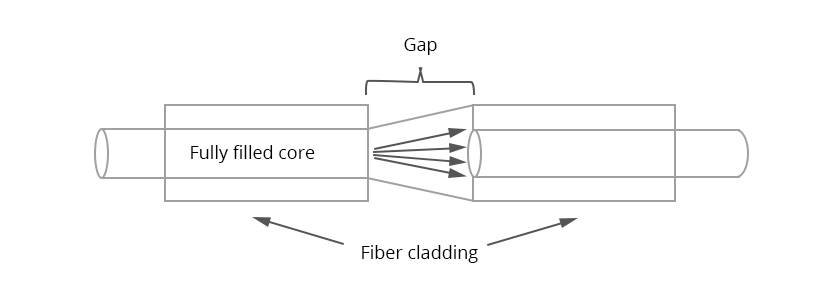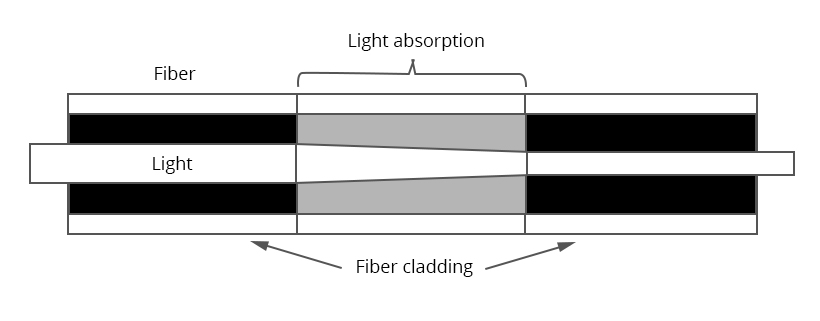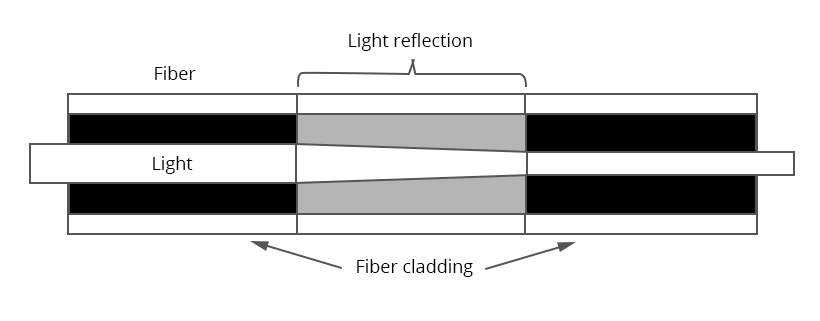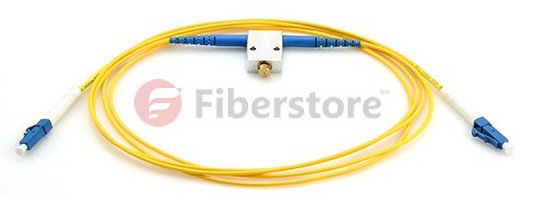Many components are used to enlarge the signals in today’s fiber optic transmission system, like EDFA (Erbium-Doped Fiber Amplifier). However, in some cases, the power level of an optical signal should be reduced. For example, in DWDM (dense wavelength division multiplexing) systems, multiple wavelength channels arriving at a node may pass though different paths and experience different losses, their powers need to be equalized before entering the optical amplifier to get flat gain since the gain of each channel depends on the power levels of the other channels. In this case, a point reduction in optical signal strength may be required. And a component is usually used which is known as fiber optic attenuator. This article is to give a basic introduction of fiber optic attenuator in details.
A fiber optic attenuator, also known as an optical attenuator, is a passive component that is used to reduce the power level of an optical signal by a predetermined factor in fiber optic transmission system. The intensity of the signal is described in decibels (dB) over a specific distance the signal travels. Fiber optic attenuators are generally used in single-mode long-haul application.
As technologies advanced, many principles are used in the operation of fiber optic attenuator to accomplish the desired power reduction. Several operation principles of fiber optic attenuators are being introduced here.
Gap-loss Principle: in attenuator using gap-loss principle, the reduction of the optical power level is accomplished by two fibers that are separated by air to yield the correct loss. The optical signal is attenuated when it passes a longitudinal gap between two optical fibers. This kind of attenuator is also called air gap attenuators which are susceptible to dust contamination and can be sensitive to moisture and temperature variations. In addition, this attenuator is very sensitive to modal distribution ahead of transmitter. Thus, it is recommended to be used very close to the optical transmitter. The farther the air gap attenuator is placed away from the transmitter, the less effective the attenuator is, and the desired loss will not be obtained. To attenuate a signal far down the fiber path, and optical attenuator using absorptive or reflective techniques should be used. Gap-loss principle is showed as following picture.

Absorptive Principle: as the fiber optic has the imperfection to absorb optical energy and convert it to heat. This absorptive principle is used in the design of fiber optic attenuator, using the material in optical path to absorb optical energy. This principle is very simple, however, it can be an effective way to reduce the optical signal power. The following picture shows the absorptive principle.

Reflective Principle: another imperfection of fiber optic is also being used to reduce the signal power, which is reflection. The major power loss in optical fiber is caused by the reflection or scattering. The scattered light causes interference in the fiber, thereby reducing the signal power. Using reflective principle (shown in the picture below), fiber optic attenuator could be manufactured to reflect a known quantity of the signal, thus allowing only the desired portion of the signal to be propagated.

Various principles are being applied to reduce the power single. Also various types of attenuators are being manufactured to meet different applications. The following part is about the main types of the fiber optic attenuators.
Fixed and variable attenuators are the main types that are being provided in today’s market. Their characteristics are being introduced.
Fixed Attenuator, as the name implies, has a fixed attenuation level. Fixed attenuator can theoretically be designed to provide any amount of attenuation that is desired and be set to deliver a precise power output. Fixed attenuators are typically used for single-mode applications. They mate to regular connectors of the identical type for example FC, ST, SC and LC.
Variable attenuators allow a range of adjustability, delivering a precise power output at multiple decibel loss levels. Variable attenuators can be divided into two types. One is stepwise variable attenuator which can change the attenuation of the single in known steps such as 0.1dB, 0.5dB, or 1 dB. The other one is continuously variable attenuator. This kind of fiber optic attenuator produces precise level of attenuation, with flexible adjustments. It allows the operators to adjust the attenuator to accommodate the changes required quickly and precisely without any interruption to the circuit. They are also available with various fiber optic connectors.
Fiber optic attenuator, an important device to control the power level of optical signal precisely, are being designed to different operation principles and types. Getting the basic knowledge about its working principle and types could help to select the fiber optic attenuator to the required applications.


